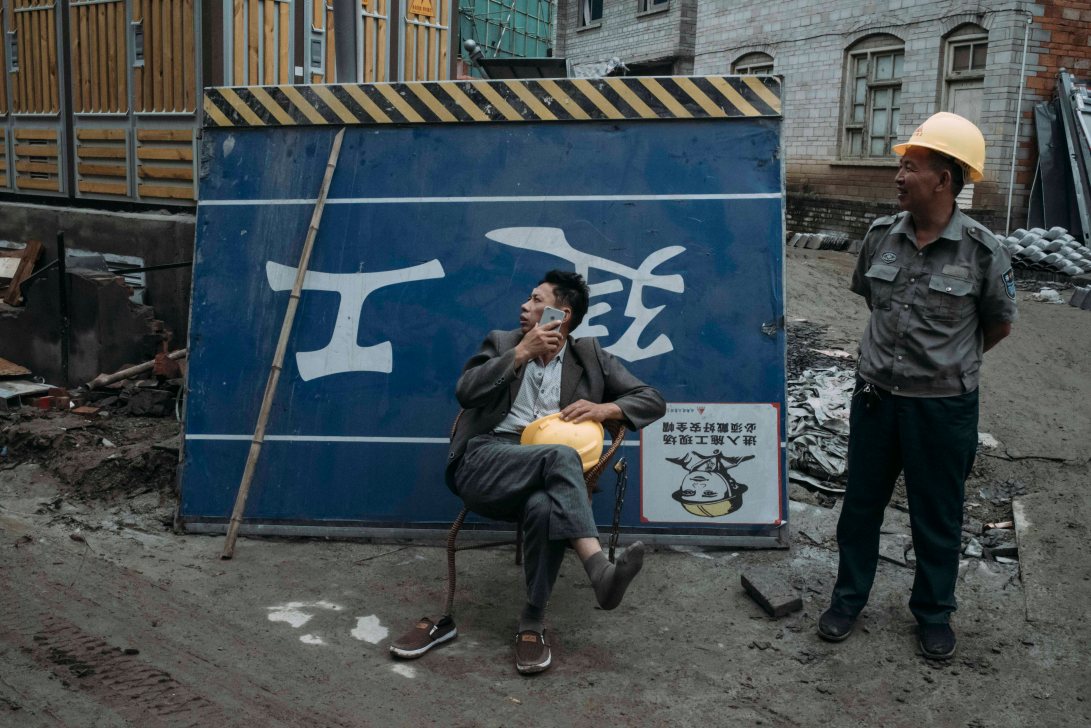When culture-led regeneration commercialises heritage at the expense of authenticity, a city suffers. Barclay Bram Shoemaker reports on how tourism has transformed, and divided, the Chinese town of Anren

Anren, in China’s south west, is a small town with a big museum. An hour’s drive from Chengdu, the provincial capital of Sichuan, Anren is the site of the Jianchuan Museum Cluster, China’s largest private museum set across a sprawling complex of 35 museum buildings housing over 8 million items, including a 28m-tall decommissioned intercontinental ballistic missile.
Before the arrival of the museum in 2005, Anren was an unremarkable Chinese town; a few dilapidated, early 20th century, republican-era manors in various states of disrepair and an old street — 树人街 (Shuren Street) — with a series of shops, restaurants and tea houses, largely unaltered from their original state By the time I first visited in 2015, it had already been completely transformed.

When Fan Jianchuan, a multi-millionaire entrepreneur, arrived in the early 2000s to build his eponymous museum, he quickly purchased many of the republican-era manors and a number of the more impressive storefronts on Shuren Street. In 2008, he sold up to the Chengdu Culture and Tourism Company (Wen Lu, as per its Chinese name) making a tidy return on his investment after the tourist potential of the town started to become clear as curious visitors started to visit the new museum. Wen Lu quickly set about renovating the old town.
One of the company’s first schemes was to build an Art Deco-style cinema at the top of Shuren Street, and a tramway that ran close to the museum and a recently completed Sheraton hotel. In laying the tracks, however, the company inadvertently cut Anren in two. On one side is the old town, where many of the inhabitants still live. On the other side is the museum, Shuren Street and the increasingly commercialised tourist hub of the city — in other words, the new-old town.

Small towns all over China are latching on to obscure pieces of local history — or inventing them entirely — to try and lure domestic tourists with “heritage” sites. (Chinese tourists embarked on five billion domestic trips in 2017, generating over 4.5 trillion Yuan (nearly £500bn) in 2017.)
The city of Lijiang in Yunnan is emblematic of this trend. The ancient city was declared a UNESCO world heritage site in 1997 and subsequently over-restored for the tourist gaze, at the expense of the diverse local population. Despite this, “lijiangification” 丽江化 is a term often trotted out enthusiastically by local officials.

In Anren, this trend has manifested itself most clearly in the tramway in the centre of town — boxy and sleek with vague allusions to Art Deco chic. The only problem is that Sichuan never had trams, and it is Shanghai — a city over 2000km away — which is the home of Chinese Art Deco. What’s more, the design of the tram was based on a model that ran in Harbin, a city so far to China’s North East that it’s technically in Siberia and was once part of Russia. It didn’t come cheap either; Anren’s tram is reported to have cost roughly 27,000,000rmb (£3,000,000).
Philosophically, China’s new-old towns represent an interesting problematic to our concept of authenticity. Much of the historic fabric of these towns was destroyed during Mao Zedong’s Cultural Revolution (1966–76) when the policy of “smash the Four Olds” (old customs, habits, culture and thinking) saw the wholesale destruction of much of China’s millennia-spanning material culture. What was left has often been swept away in the madcap pursuit of growth and development.

As such, 古城 (new-old towns) are sometimes constructed directly on top of the scant remains of genuinely old areas of town — as in the case of Anren’s Shuren street which directly incorporates original architecture — and in others, like Shanghai’s Xintiandi shopping district, they are built entirely from scratch; Potemkin antiquity.
When I asked Wei Jianmin, the head of publicity at the Jianchuan Museum who had formerly worked on the development of Anren as part of the Jianchuan company, about whether the lack of authenticity in some of the developments bothered him, he shrugged. “People like to have a good time,” he said, “and now there’s lots of ways for people to enjoy themselves here.”

One day in Anren I was curious about where the tramway led; I realised that despite weeks in the town I’d never seen it run. I followed it from its start outside of the Sheraton, through the new-old town, passing over into the actual old town. There was a tea-house full of elderly men playing majiang and smoking. Across the street a shop selling elaborate funeral wreaths sombrely kept watch. I continued, walking through a construction site until I finally got to the end of the line. I could see the gleaming trams in their depot. Nearby, a security guard watched me intently. I asked him when they were next scheduled to run. He looked at me quizzically. “I have no idea,” he said. “I can’t remember the last time we actually used them.”
